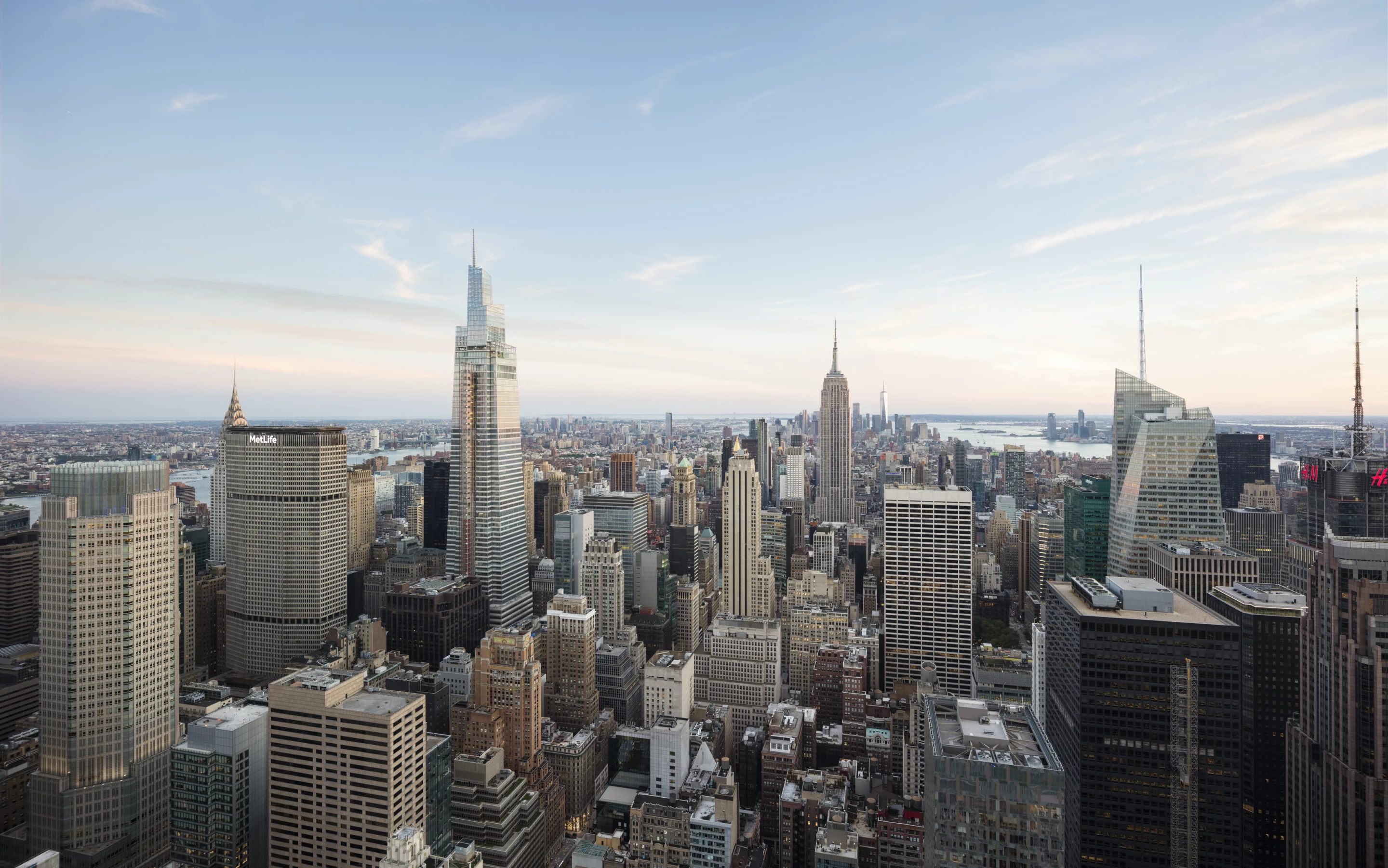The COVID-19 pandemic is largely to blame for a second consecutive year of decline in the number of new tall buildings built worldwide, according to the Council on Tall Buildings and Urban Habitat's (CTBUH) annual Year in Review. But it wasn't without some high points, as one city managed to nab first and second spots for the first time in decades.
Delving into CTBUH's data, there were 21 supertall skyscrapers (that is, towers reaching a height of at least 300 m/984 ft) deemed officially completed in 2020, which is down from 26 in 2019. However, for the first time since 2014, there wasn't a single skyscraper over 500 m (1,640 ft) completed. Additionally, there were a total of 106 buildings over 200 m (656 ft) in height completed, which is down from 2019's 126.
"For many people, 2020 will be remembered as the year that nothing went to plan," says CTBUH. "The same can be said for the tall building industry. As a global pandemic took hold in the first quarter, numerous projects around the world, at various stages, ground to a halt as restrictions on assembly came into force. This is the second year in a row in which the completion figure declined. In 2019, the reasons for this were varied, though the efforts of China to curtail its debt, combined with public policy statements against needless production of exceedingly tall buildings, constituted a strong factor that has persisted into 2020."
Despite these challenges, 2020 saw the Big Apple win big, with the two tallest buildings of the year completed in New York City. This represents the first time China has not boasted the tallest building of the year in five years, and the first time a single city has hosted both the tallest and second tallest building in one year since 1963.
2020's tallest building was Central Park Tower, which rises to a height of 472 m (1550 ft). It was designed by skyscraper experts Adrian Smith and Gordon Gill Architects, and is also the world's tallest residential skyscraper, offering ultra-plush apartment homes with views over Central Park. One Vanderbilt, which was designed by Kohn Pedersen Fox Associates is the second-tallest skyscraper of the year and rises to a height of 427 m (1,401 ft). Its overall form is heavily inspired by the golden age of NYC skyscraper construction, though it boasts some sustainability features too.
Though it didn't claim the top spot this year, China still remains the overall leader in tall building construction, with 56 buildings over 200 m (656 ft) completed in 2020 – or over half of those completed worldwide. The second-most prolific country for buildings over 200 m (656 ft) was the United Arab Emirates, which completed a dozen, followed by the US with 10, and the UK with five. Moving further down the rankings, India completed three, while Mexico had two.
When it comes to cities, there are no surprises: Dubai, UEA, is first worldwide with 12 buildings over 200 m (656 ft), Shenzhen, China, is second with nine towers, and Shenyang, also in China, is third, with eight.
Looking ahead into 2021, CTBUH predicts that between 125 and 150 buildings of 200 m (656 ft) or greater in height will be completed. Of these, it expects that between 14 and 30 will be supertall, though a lot is still up in the air and we could be seeing the effects of COVID-19 on the industry for some years.
"It is reasonable to predict that COVID-19 will affect investment and construction for some time to come," cautions CTBUH. "It is already the case that some projects expected to have completed by the end of 2021 are being moved to 2022, including the 644-m [2,178-ft] Merdeka PNB118 in Kuala Lumpur, a change that its developers have directly attributed to Malaysia's Movement Control Order, which the country issued in response to the pandemic."
Source: CTBUH








